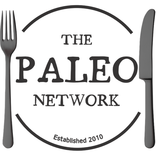Trolley Spying
When I go food shopping, I'm always really interested the see what other people have in their trolleys. Likewise, I get some funny looks, especially when I buy lots of red meat, eggs and coconut milk. I can just see the people wondering what I'm going to do with it all. Surely she can’t be going to eat all those foods we’re constantly told are bad, by herself?
People are generally quick to say how healthily they eat, but when you see their trolley, surely you are seeing what they actually eat, rather than what they’d like you to think they eat.
Trolleys full of processed junk food bother me far less; at least the people pushing those trolleys, on some level, know they have a bad diet. What bothers me more is the trolleys I see full of “healthy” foods. The type of “healthy foods” I wouldn't go near.

A very sad, un-Primal grocery trolley
I see so many trolleys full of low fat, highly processed products (I can’t bring myself to call them food). Trolleys full of whole grains, as they are good for us, right? Diet drinks with ingredients I can’t pronounce. Spray on “vegetable” oils, to make sure as little fat as possible contributes to dinner. Processed low fat sauces to smother wholegrain pasta with. “Healthy” reduced fat chips, presumably to deal with the blood sugar crash that comes after eating the pasta. Huge bottles of orange juice. Skim milk to pour over the healthy low fat breakfast cereal. Margarine instead of butter, Weight Watchers low fat processed sweets to ensure there is never any need to go over three hours without eating.

Pasta Sauce and Processed Sauce, yum yum.
I wonder, do people really think these “healthy” low fat processed products taste nice? I strongly suspect they are eaten for the perceived health benefits, not because they taste nice. My Paleo diet not only tastes amazing, but it is super healthy too.
This is my recent trolley. I generally buy all of my meat from my wonderful local organic butcher, so I usually just buy some veggies, fruit for my house-mate to take to work (I'm only eating fruit once or twice a week at the moment), coconut milk, almond butter (for use in an occasional NoOatmeal) and I sometimes buy nuts depending on which recipes are on my menu plan that week.

My recent paleo groceries
Are you guilty of trolley spying too? Are you frequently shocked by what some other shoppers fill their trolleys with? Do you get disapproving looks at your Paleo trolley too?




























